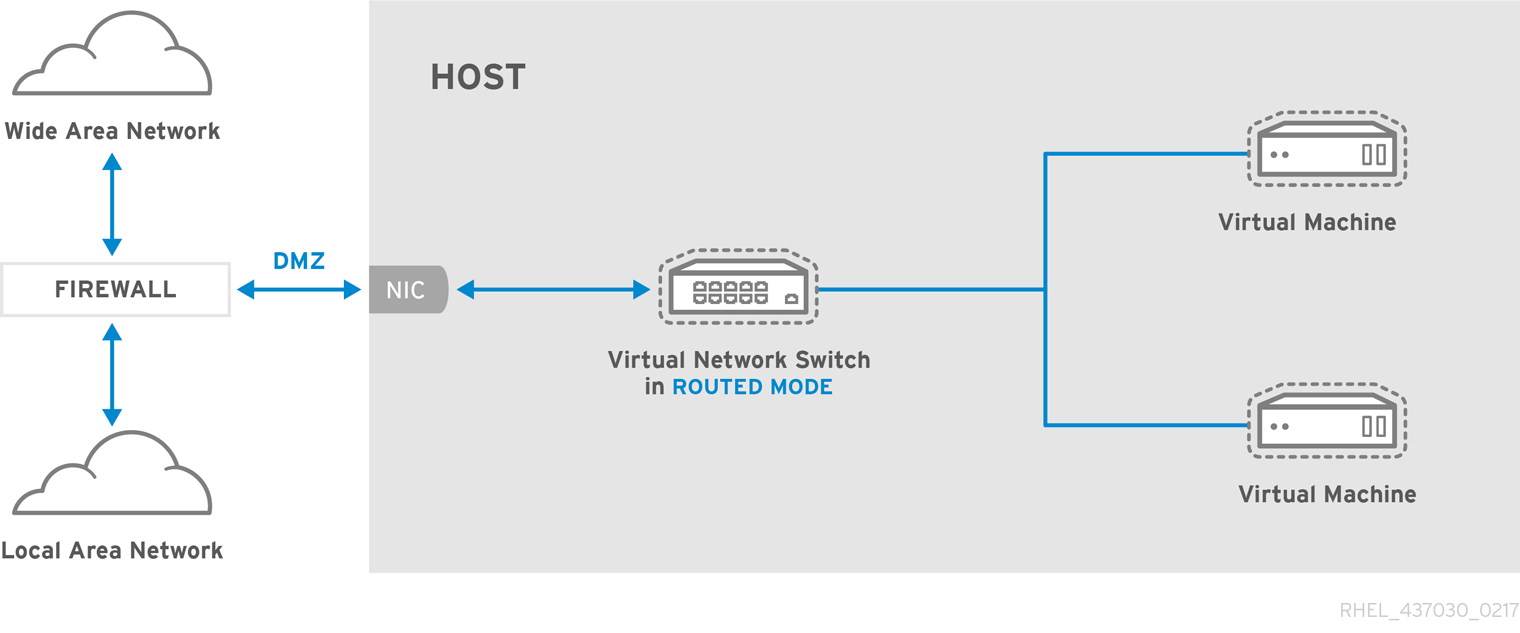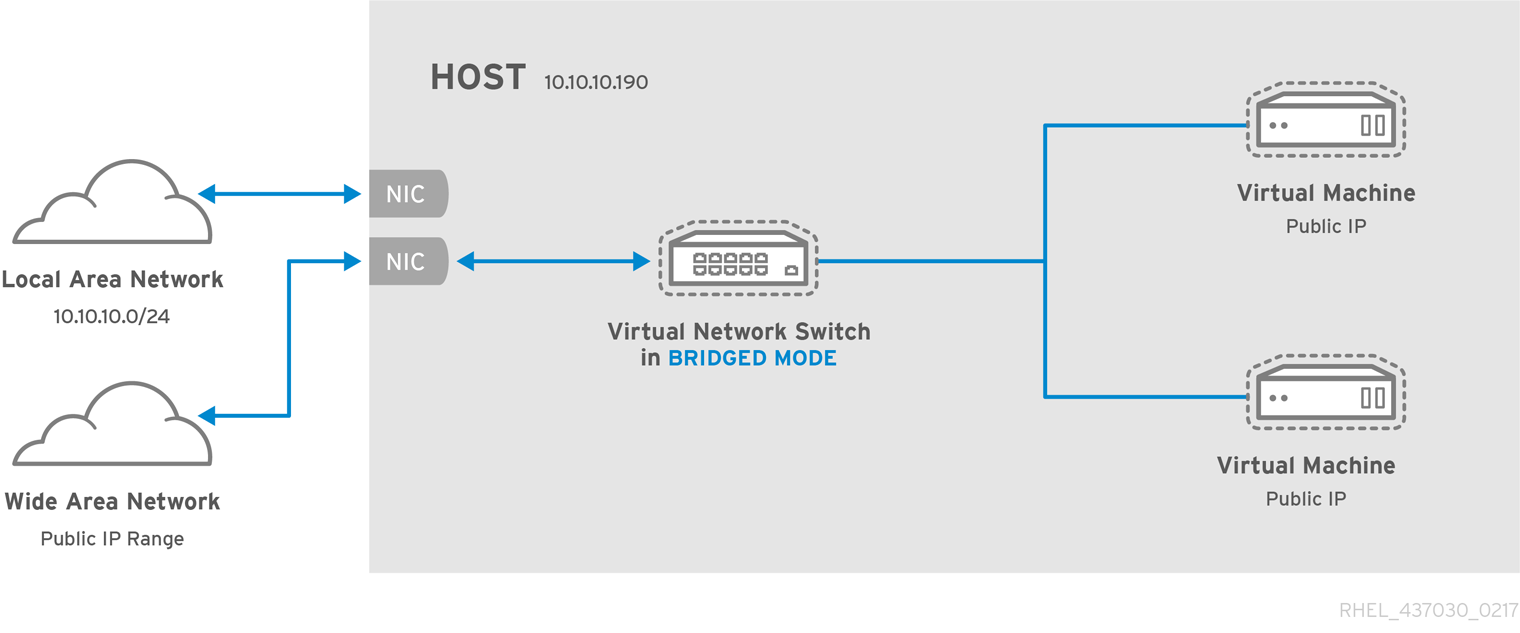18.7.2. Routed Mode
Consider a network where one or more nodes are placed in a controlled subnetwork for security reasons. The deployment of a special subnetwork such as this is a common practice, and the subnetwork is known as a DMZ. Refer to the following diagram for more details on this layout:
Figure 18.8. Sample DMZ configuration
Consider a virtual server hosting company that has several host physical machines, each with two physical network connections. One interface is used for management and accounting, the other is for the virtual machines to connect through. Each guest has its own public IP address, but the host physical machines use private IP address as management of the guests can only be performed by internal administrators. Refer to the following diagram to understand this scenario:
Figure 18.9. Virtual server hosting sample configuration

